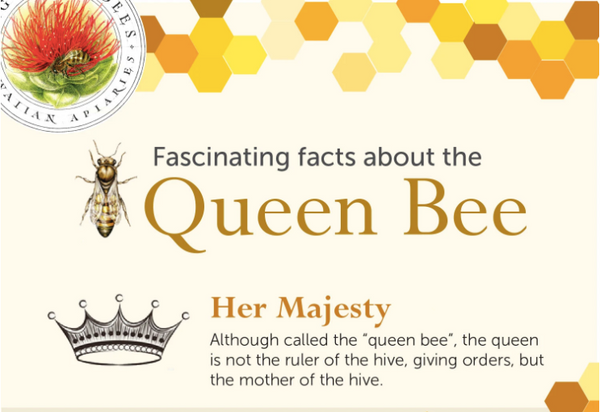
Are you ready to embark on a new adventure in beekeeping? It can be an exciting and rewarding journey, but it’s important to start off on the right foot. In this Bee-ginners Guide, we’ll provide you with tips and terminology to help you kickstart your beekeeping journey and ensure success.
As Albert Einstein once said, "If the bee disappeared off the face of the Earth, man would only have four years left to live." Bees are essential for pollinating crops and producing honey, making them crucial for our food supply. By becoming a beekeeper, not only will you be able to enjoy delicious honey straight from your own hive, but you’ll also be contributing to the health of our planet. So let’s dive into the world of beekeeping and learn all about choosing the right location for your hives, setting up your hive, caring for your bees, harvesting honey, and more!
Understanding Beekeeping Terminology
You’re about to enter a world where words like ‘hives’, ‘supers’, and ‘smokers’ are commonplace, and you’ll be able to picture yourself tinkering with these tools as you learn the ins and outs of beekeeping terminology. Beekeeping equipment is essential for taking care of your bees, but it can also be overwhelming when you’re starting out. Hives refer to the wooden boxes that house your bees, while supers are additional boxes placed on top of hives to provide more space for honey storage. And then there’s the smoker – a tool used to calm down bees during inspections by puffing smoke into the hive.
Understanding bee behavior is another important aspect of beekeeping terminology. Bees communicate with each other through pheromones, and their dance language is an elaborate way of telling each other where food sources are located. As a beekeeper, learning these behaviors will help you anticipate potential issues in your hives and take action before they become bigger problems. Now that you have a basic understanding of some common beekeeping terms, let’s move on to choosing the right location for your hives.
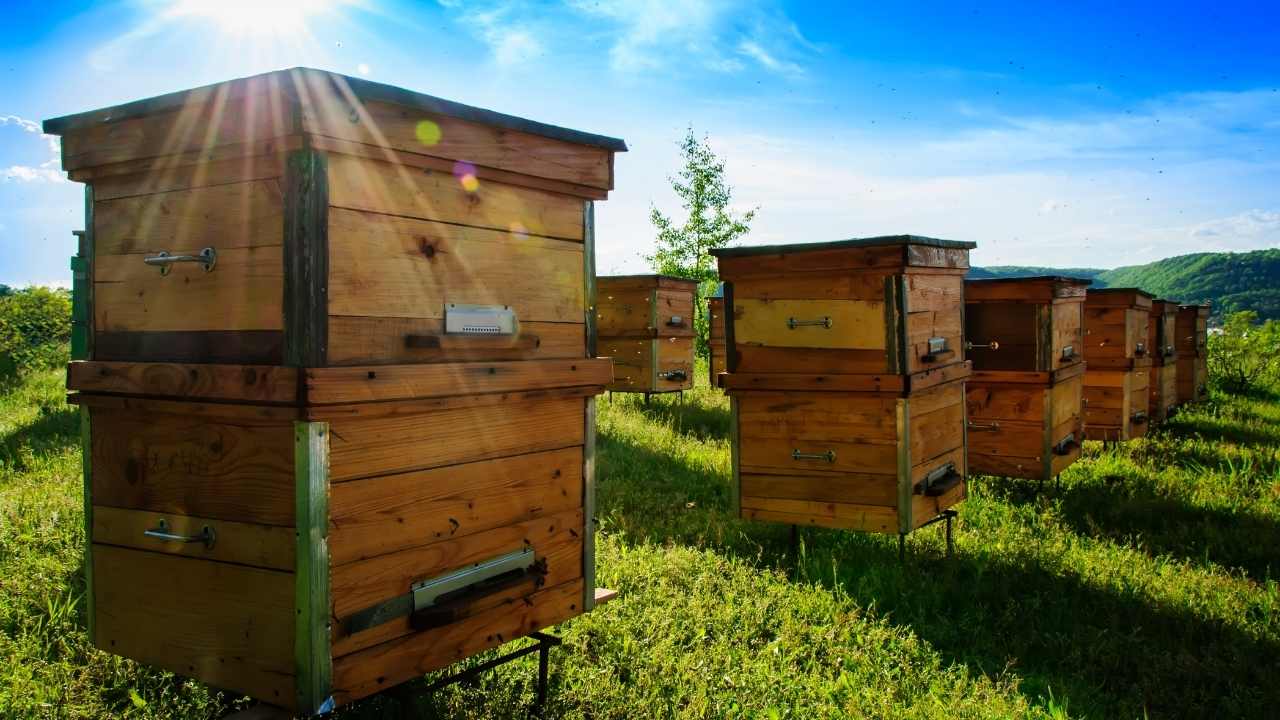
Choosing the Right Location for Your Hives
Finding the perfect spot for your hives is crucial to ensure your bees have access to plenty of sunshine, shelter from the wind, and a nearby water source. When it comes to hive placement, there are a few things you need to consider. Firstly, you want to choose an area that gets plenty of sunlight throughout the day. Bees need warmth and light in order to be productive and healthy. However, you also want to make sure that your hives have some shade during the hottest part of the day.
Climate considerations should also be taken into account when choosing where to place your hives. Bees can withstand a range of temperatures but they prefer mild climates that aren’t too hot or too cold. You’ll also want to make sure that your hives are sheltered from strong winds as this can cause damage and disorientation for your bees. Finally, having a nearby water source is essential as bees need water in order to regulate their hive temperature and produce honey.
With hive placement taken care of, it’s time to move on to setting up your hive with all the necessary equipment and tools needed for successful beekeeping!
Setting Up Your Hive
Now that you’ve found the perfect spot for your buzzing buddies, it’s time to gear up and get your hive ready for their arrival. The first step in setting up your hive is to ensure proper placement. Your bees will need some sunlight, but not too much heat, so choose a location with partial shade during the hottest part of the day. Make sure there is enough space around the hive for easy access and maintenance.
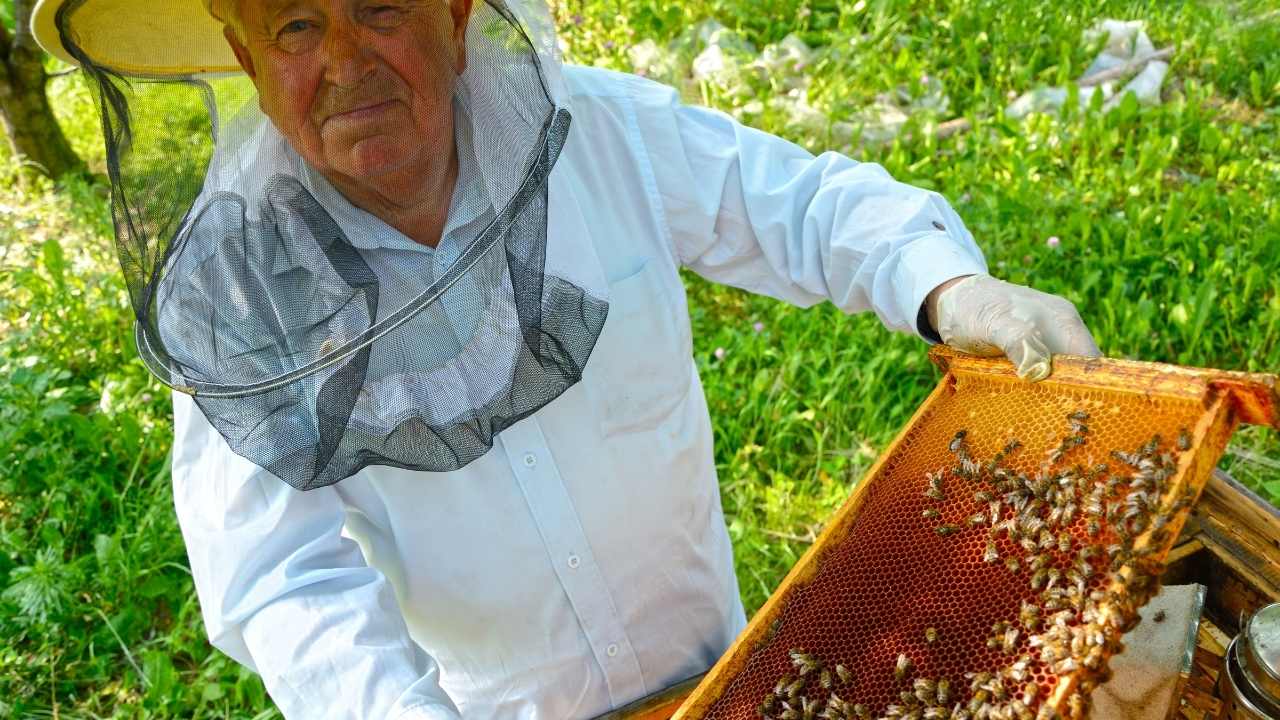
Next comes equipment selection. You’ll need a bottom board, hive bodies (also known as supers), frames, foundation sheets, an inner cover, and an outer cover. It’s important to invest in high-quality equipment to ensure the safety and health of your bees. Assemble all of the pieces according to instructions carefully before introducing your bees into their new home. With proper hive placement and equipment selection taken care of, you can move on to caring for your bees by ensuring they have enough food and water.
Caring for Your Bees
Now that you’ve set up your hive, it’s time to start caring for your bees. Feeding and watering are crucial parts of beekeeping, as they ensure that your bees have the necessary nutrients and hydration to thrive. Monitoring your bees’ health is also important, as it allows you to catch any potential issues early on and take corrective action. Lastly, treating for pests and diseases is an ongoing task that requires vigilance in order to keep your colony healthy and productive. By paying attention to these key points, you’ll be well on your way to becoming a successful beekeeper.
Feeding and Watering
To ensure your colony stays healthy and strong, you’ll need to provide them with plenty of food and water throughout the year. Proper bee feeding will help boost their immune system, increase honey production, and promote brood rearing. Here are some tips on how to feed your bees properly:
- Sugar syrup is a great source of carbohydrates for your bees. Mix one part granulated sugar with one part water (1:1 ratio) during the spring and fall when nectar sources are scarce.
- Pollen patties can provide additional protein that can help stimulate brood production. This is especially important during early spring when there isn’t enough pollen available in nature yet.
- Honey is also a good food source for your bees but should only be used as an emergency feed during winter or when there’s a shortage of nectar.
Watering techniques are just as important as bee feeding. Bees need water not only for hydration but also for regulating the temperature inside their hives. Here are some tips on how to provide water for your bees:

- Provide a shallow dish or bird bath filled with clean water near the hive entrance.
- Add floating objects such as twigs or cork to prevent drowning.
- Change the water frequently to prevent contamination.
Ensuring that your colony has access to sufficient food and clean water is essential in keeping them healthy. However, it’s also important to monitor their health regularly through proper inspection techniques which we’ll discuss in the next section.
Monitoring Health
Make sure you keep a close eye on the health of your colony by regularly inspecting them, just like how a doctor checks up on their patients. Monitoring techniques are essential to detect any issues early and provide prompt treatment. Signs of hive health include bees flying in and out of the entrance, pollen being brought in, brood rearing activity, and queen presence.
Common bee diseases that can affect your colony include American Foulbrood (AFB), European Foulbrood (EFB), and Nosema. Regular inspection is crucial to catch these diseases early before they become widespread within the colony. Prevention measures include keeping a clean apiary site, using preventative treatments like essential oils or adding probiotics to their diet, and maintaining a healthy environment for your bees. Keeping a record of inspection dates can help track any changes over time and identify patterns that may indicate an issue. Proper monitoring techniques are the first line of defense against common bee diseases before they require extensive treatment.
Now that you know how to monitor the health of your colony effectively let’s move onto treating for pests and diseases without compromising their wellbeing.
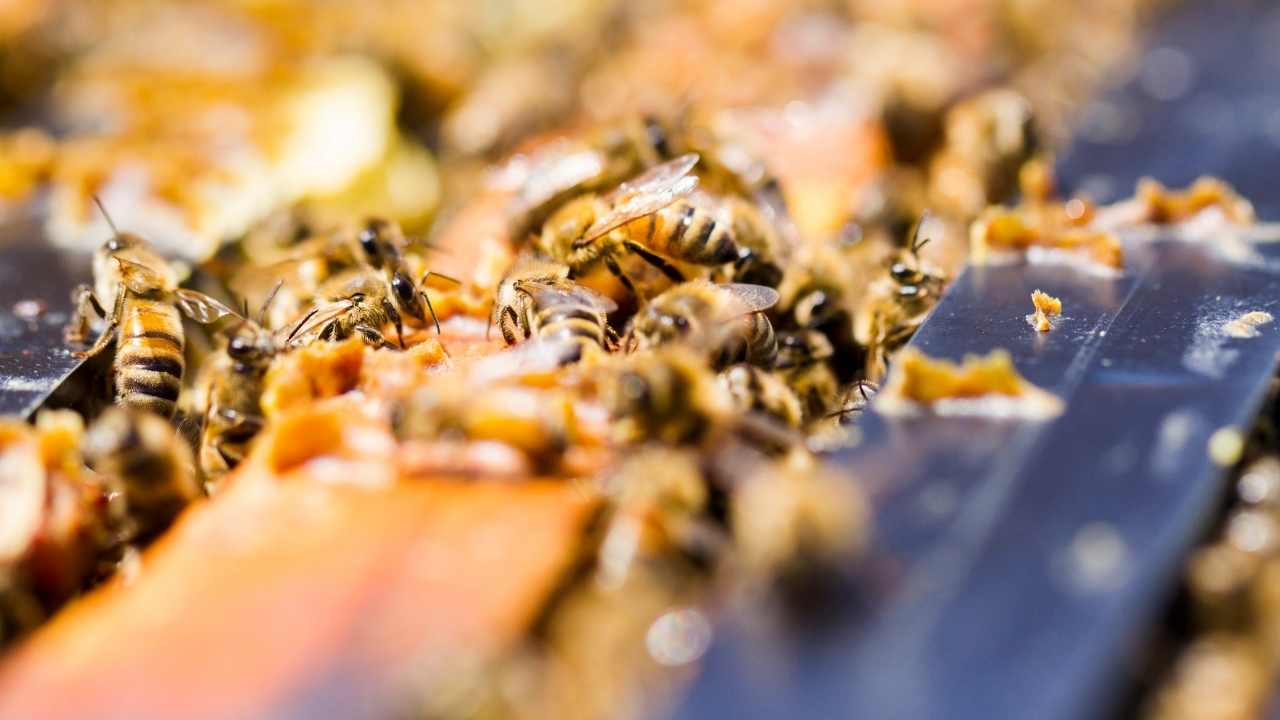
Treating for Pests and Diseases
Get ready to learn how you can keep your colony healthy and free from pests and diseases! Integrated pest management (IPM) is an effective method of preventing colony collapse. This approach involves using a combination of natural methods such as essential oils, physical barriers, and trap crops to control pests. Chemical treatments should be used sparingly and only when necessary as they can harm beneficial insects and contaminate honey.
Regular hive inspections are crucial in detecting early signs of infections such as foulbrood, varroa mites, or wax moths. Infected hives should be isolated and treated immediately to prevent the spread of disease. Additionally, good sanitation practices such as cleaning equipment regularly with bleach or heat treatment can reduce the risk of infection. By practicing IPM and maintaining good hygiene practices, you can ensure that your bees thrive in a healthy environment.
Now that you have learned about treating for pests and diseases, it’s time to move on to harvesting honey!
Harvesting Honey
So, you’ve successfully managed your beehive and now it’s time to reap the sweet rewards of all your hard work! But before you start harvesting that delicious honey, there are a few things you need to know. First and foremost, it’s important to know when your honey is ready for harvest. Once it’s time to extract, there are various methods available such as using an extractor or crushing and straining the comb. Finally, once you have harvested your honey, proper storage is crucial if you plan on selling or using it yourself.
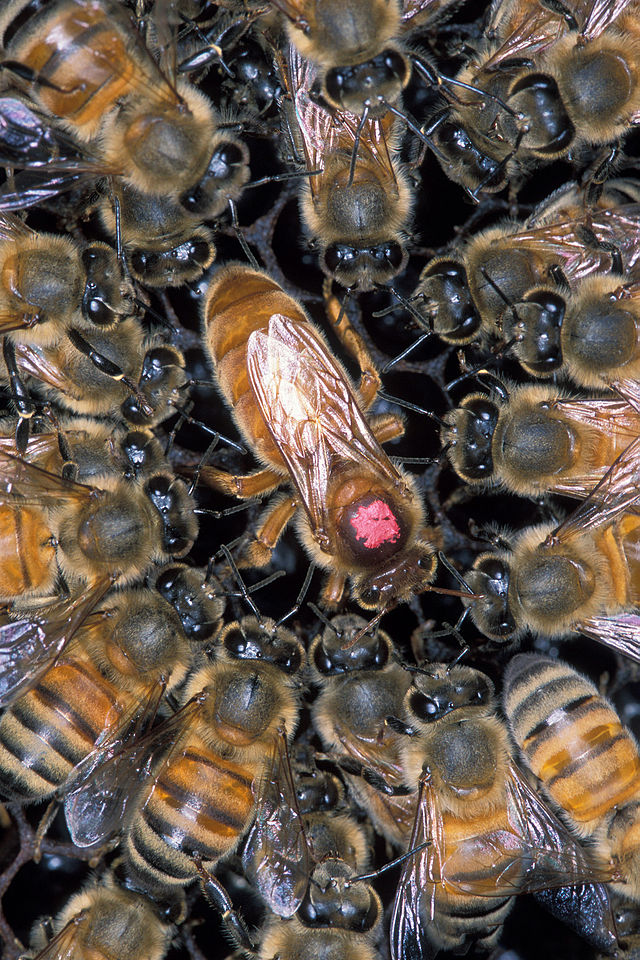
Knowing When to Harvest
When it comes to harvesting, you’ll want to keep a close eye on the honeycomb and look for signs of maturity before you begin the process. Here are four key indicators that your honey is ready for harvest:
- Capped Cells: The wax cells in which bees store their honey will be capped with wax when the honey is fully matured.
- Lower Moisture Content: Honey should have a moisture content of less than 18% before it’s harvested; any higher and it could ferment or spoil.
- Rich Color and Flavor: When your honey has a deep amber color and strong flavor, it’s an indication that it’s ready for harvest.
- Bee Behavior: If you observe bees aggressively trying to remove excess honey from the hive, then this can also indicate that it’s time to harvest.
Once you’ve determined that your honey is ready, it’s time to move onto extracting it from the comb. This process involves separating the wax comb from the liquid honey inside by spinning or pressing them apart. But before we jump into extracting techniques, let’s first discuss what to do if you find yourself with more honey than you need – selling or gifting your surplus can be a great way to share your bounty with others!
Extracting Honey
Now that you know when to harvest your honey, it’s time to extract it from the comb. Honey extraction techniques vary depending on the equipment you have available and the amount of honey you need to extract. The most common method is using a honey extractor, which spins the frames of honeycomb until the honey is flung out by centrifugal force. This method allows for easy collection of clean, pure honey without damaging the comb.
Beekeeping equipment for honey extraction includes a variety of tools such as uncapping knives, strainers, and settling tanks. Uncapping knives are used to remove the wax caps from each cell in the comb before placing them in an extractor. Strainers are used to filter out any debris or wax particles that may have fallen into the extracted honey. Settling tanks allow any air bubbles or foam to rise to the top so that only pure liquid honey remains at the bottom. With these tools and techniques, you can ensure that your harvested honey is high-quality and ready for consumption or sale.
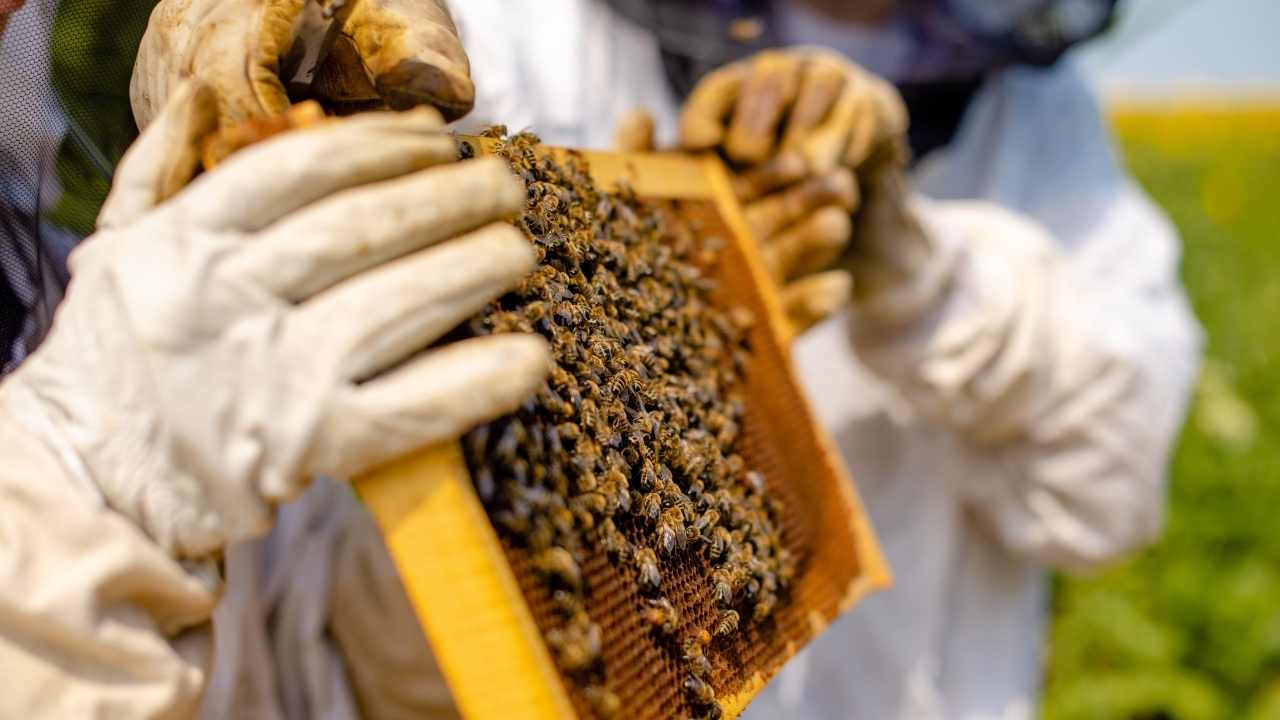
As a beekeeper, extracting your own honey can be a rewarding experience that allows you to enjoy all-natural sweetness straight from your hives. But what do you do with all this delicious golden goodness? In our next section, we’ll discuss how to store and sell your harvested honey for maximum freshness and profit.
Storing and Selling Your Honey
Once you’ve successfully extracted your honey, it’s time to think about how you can make the most of this liquid gold. Honey packaging is important as it not only preserves the quality of your honey but also makes it visually appealing for potential customers. Choose airtight glass jars that are easy to open and clean. You may want to consider labeling them with creative names that reflect the unique flavors and characteristics of your honey. This will help people remember your brand and differentiate it from other honeys in the market.
Marketing is key when selling your honey. Consider setting up a website or social media page where you can showcase your product and connect with customers directly. Share recipes and cooking tips using your honey to inspire people to use it in their daily lives. With some effort and creativity, you can turn beekeeping into a profitable venture that provides joy not just for yourself but for others as well. In the next section, we’ll discuss some tips for success when starting out on this beekeeping journey.
Tips for Success
If you want to succeed in beekeeping, it’s important to keep in mind some helpful pointers. Here are three tips to help you on your journey:
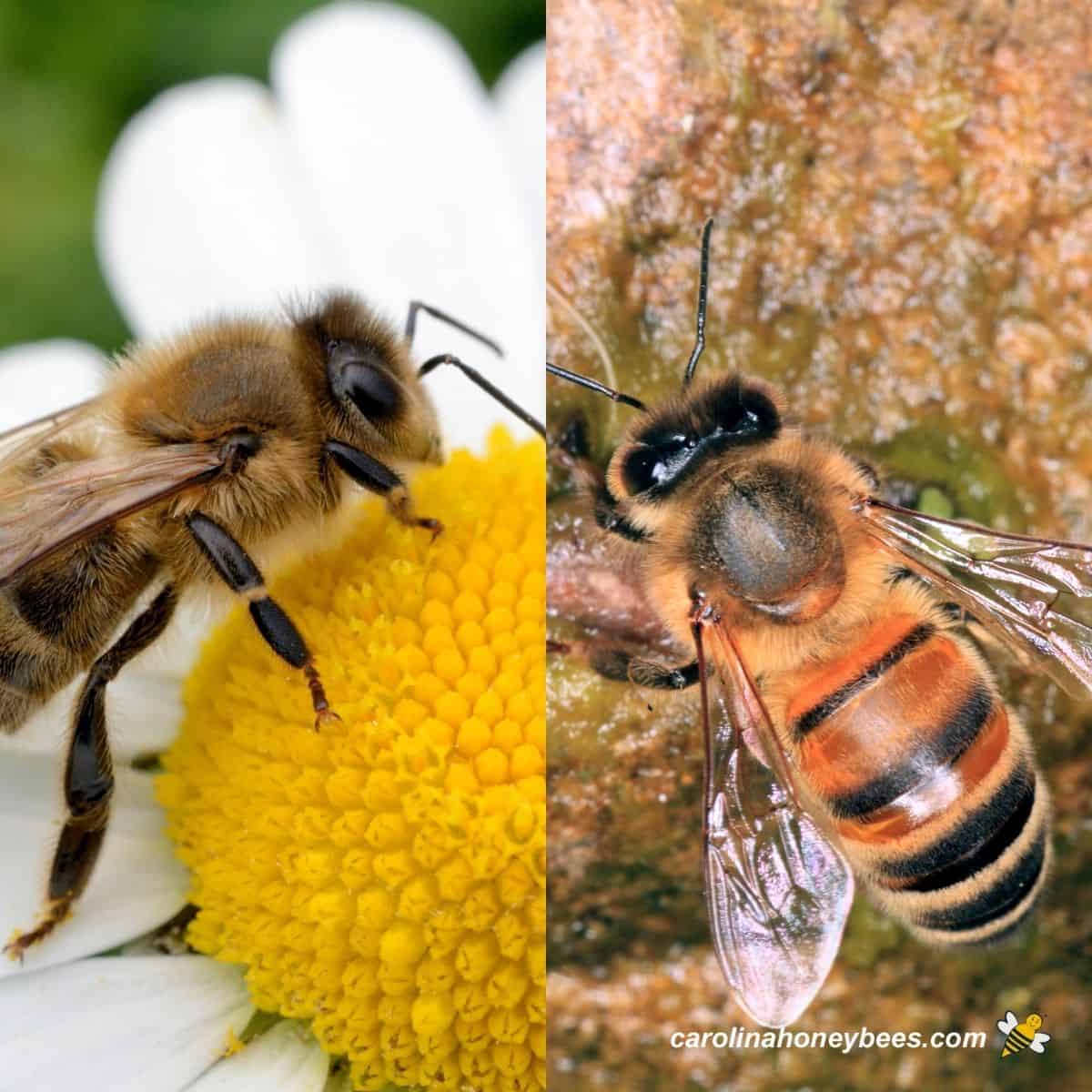
- Keep up with hive maintenance: Regularly inspect and clean your hives to ensure the health of your bees. This includes checking for pests or diseases, replacing old comb, and making sure the queen is laying eggs properly.
- Learn about bee behavior: Understanding how bees behave can help you prevent issues like swarming or aggressive behavior. For example, knowing when and why bees swarm can help you take preventative measures.
Another tip for success in beekeeping is to network with other beekeepers. Join a local club or attend workshops to learn from experienced beekeepers and gain valuable insights into the craft. Additionally, always be willing to continue learning and adapting as new information becomes available. With these tips in mind, you’ll be well on your way towards a successful and fulfilling beekeeping experience.
Frequently Asked Questions
What are some common mistakes beginners make when starting their beekeeping journey?
When starting your beekeeping journey, it’s common to make a few mistakes. One of the most frequent errors is not properly preparing for the arrival of your bees. This can lead to a lack of equipment or knowledge, which can be harmful to both you and the bees. Another mistake is not being aware of potential predators that could harm your hive. It’s important to research and understand how to protect your hive from bears, skunks, and other animals that may try to steal honey or attack the bees themselves. Additionally, beginners often forget to regularly check on their hives and inspect for any problems that may arise. To avoid these common mistakes, ensure that you have all necessary equipment before getting started, learn about potential predators in your area, and commit to regular hive inspections for optimal bee health.
How do you deal with aggressive or defensive bees?
Are you having trouble dealing with aggressive or defensive bees? Before anything else, make sure to wear protective gear to avoid being stung. If your colony is consistently aggressive, hive relocation may be necessary. However, if the behavior persists after relocation, it’s best to consider hiring a professional beekeeper or requeening your colony. It’s important to analyze why your bees are behaving this way – it could be due to environmental factors such as lack of food or water sources, or even genetics. With patience and proper care, you can manage even the most challenging bee colonies.
How do you prevent swarming in your hive?
If you want to prevent swarming in your hive, one of the key things to focus on is queen management. This means making sure that your queen bee is healthy and productive, with plenty of space to lay eggs and maintain a strong colony. You may also need to consider techniques like splitting or requeening if your hive seems particularly prone to swarming. Other important strategies for swarm prevention include keeping an eye on the overall health of your hive, monitoring for signs of overcrowding or disease, and being proactive about adding new supers or frames as needed. With careful attention and a solid understanding of swarm prevention techniques, you can help keep your bees happy, healthy, and productive all season long.

How do you know when your hive is ready to harvest honey?
To know when your hive is ready to harvest honey, you need to conduct a thorough hive inspection. Check the frames for capped honey cells, which are usually covered with wax and have a distinct hexagonal shape. You can also use a refractometer to test the moisture content of the honey – it should be less than 18%. When you’re confident that your bees have produced enough honey, it’s time for honey extraction. First, use a bee brush or blower to remove any bees from the frames. Then, uncap the cells using an electric uncapping knife or fork. Finally, use a centrifuge or extractor to spin out the honey from the comb. Remember to leave enough honey for your bees during winter months!
How can you ensure the health and safety of your bees during the winter months?
Winter beekeeping can be a challenging time for beekeepers, but with proper preparation and care, you can ensure the health and safety of your bees during the colder months. One important factor to consider is insulating your beehive. This helps regulate the temperature inside the hive and prevents heat loss, which can be detrimental to your colony. You can use materials like foam insulation boards or straw bales to cover your hive. Additionally, you should monitor food stores regularly as bees need enough honey to survive winter. If necessary, supplement their diet with sugar syrup or fondant. Regularly checking for signs of disease or pests is also crucial during this time. By taking these steps and staying vigilant in caring for your bees, you’ll set yourself up for success come springtime.
Conclusion
Congratulations! You have completed the bee-ginners guide and are well on your way to becoming a successful beekeeper. By understanding the terminology, choosing the right location for your hives, setting up your hive properly, and caring for your bees with dedication and knowledge, you have set yourself up for success.
Remember that beekeeping is not just about producing honey but also about supporting these important pollinators in their vital role in our ecosystem. With patience and persistence, you will learn how to care for your bees and harvest honey that is both delicious and sustainable.
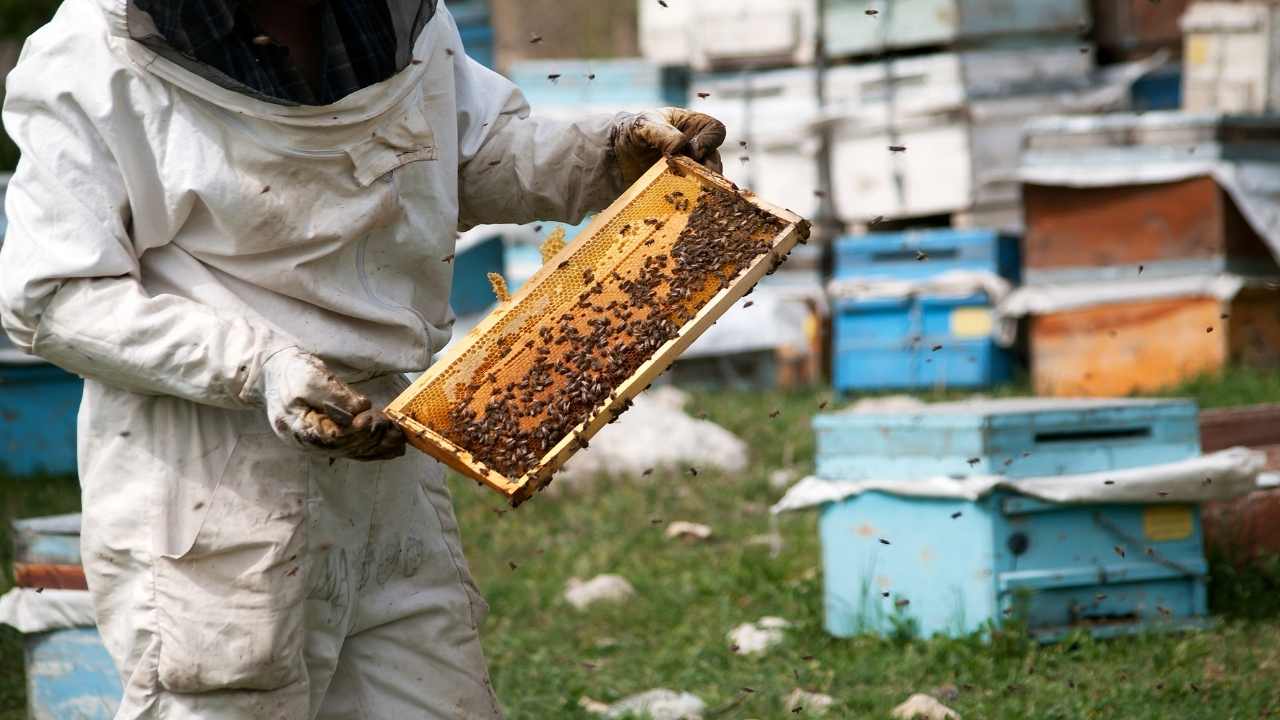
So go ahead, put on that bee suit and get buzzing! Share your newfound knowledge with others who might be interested in starting their own journey into beekeeping. Remember our motto: bees before ease (anachronism). Happy beekeeping!

Roger Thomas is a seasoned beekeeper and hive architect with a deep-seated passion for sustainable living. His fascination with bees has shaped his professional career, giving him practical and theoretical expertise in bee behavior, colony health, and optimal hive conditions. Roger’s technical skills shine in his bespoke hive creations that cater to the specific needs of diverse bee species, while his sustainable practices promote environmental balance and the wellbeing of the bee population.
As he continues his journey in beekeeping, Roger has become a dedicated advocate for responsible practices and an insightful educator in his field. His posts aim to inspire new beekeepers, underline the importance of sustainability, and showcase the remarkable contribution bees make to our ecosystem. Roger invites you to join him as he delves into the world of bees and the rewarding, honey-sweet art of beekeeping.

